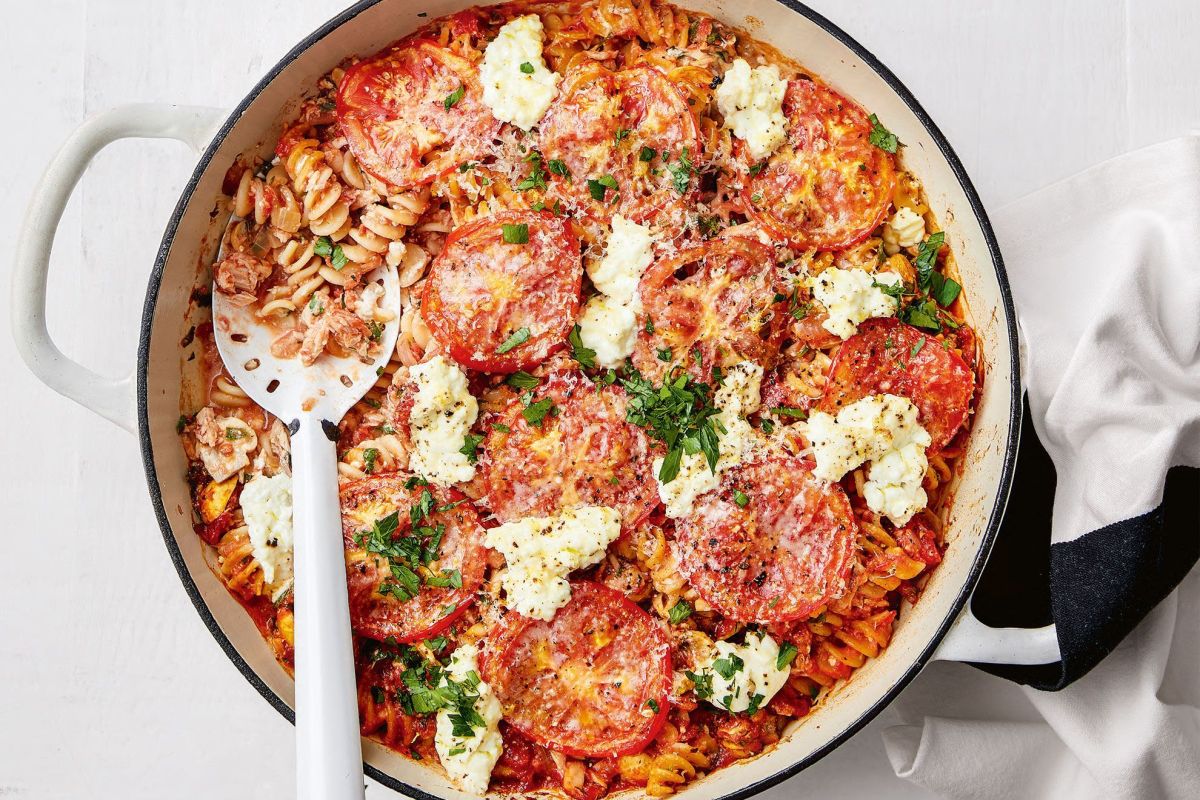Embark on a culinary journey where delicious, heart-healthy meals meet budget-friendly practicality. This guide unveils the secrets to nourishing your body without emptying your wallet. Discover simple recipes, smart shopping strategies, and time-saving meal prep techniques that empower you to prioritize cardiovascular health without compromise. Prepare to transform your kitchen into a haven of wholesome, affordable goodness.
We’ll explore a vibrant landscape of budget-friendly ingredients, showcasing their nutritional power and versatility in creating satisfying and flavorful dishes. Learn to navigate grocery stores with confidence, making informed choices that benefit both your heart and your budget. Through practical meal plans, step-by-step recipes, and expert tips, this guide empowers you to take control of your health and well-being, one delicious, affordable meal at a time.
Budget-Friendly Grocery Shopping Strategies for Heart-Healthy Eating
Embracing a heart-healthy diet doesn’t require breaking the bank. By making smart choices at the grocery store and planning your meals strategically, you can nourish your heart without sacrificing your budget. This section Artikels effective strategies to achieve both affordability and heart-healthy eating.
Affordable Heart-Healthy Ingredients
Choosing inexpensive, nutrient-rich foods is key to creating budget-friendly, heart-healthy meals. The following table highlights ten affordable ingredients and their nutritional benefits, along with recipe ideas to inspire your culinary creativity.
| Name | Price Range (per unit/approximate) | Nutritional Benefits | Recipe Ideas |
|---|---|---|---|
| Oats | $2-$5 per container | High in fiber, which helps lower cholesterol. Provides sustained energy. | Oatmeal, overnight oats, baked goods |
| Beans (Kidney, Black, Pinto) | $1-$3 per can | Excellent source of fiber, protein, and potassium. Low in fat. | Soups, stews, salads, chili |
| Lentils | $2-$4 per bag | High in fiber and protein. Good source of iron and folate. | Lentil soup, lentil loaf, lentil salads |
| Sweet Potatoes | $1-$3 per pound | Rich in vitamin A, fiber, and potassium. | Roasted sweet potatoes, sweet potato fries, mashed sweet potatoes |
| Broccoli | $2-$4 per head | Excellent source of vitamins C and K, fiber, and antioxidants. | Steamed broccoli, roasted broccoli, broccoli salad |
| Spinach | $2-$4 per bag | High in vitamins A, C, and K, as well as iron and folate. | Salads, smoothies, sautéed spinach |
| Salmon (canned) | $2-$4 per can | Rich in omega-3 fatty acids, which are beneficial for heart health. Good source of protein. | Salmon patties, salads, pasta dishes |
| Bananas | $0.50-$1 per banana | Good source of potassium, fiber, and vitamin B6. | Smoothies, snacks, baked goods |
| Apples | $1-$2 per apple | High in fiber and antioxidants. | Snacks, applesauce, pies |
| Whole Wheat Bread | $3-$5 per loaf | Provides fiber and complex carbohydrates for sustained energy. | Sandwiches, toast, French toast |
Weekly Meal Plans Under $50
Planning your meals ahead of time can significantly reduce food waste and keep your grocery bill down. These three sample weekly meal plans demonstrate how to create delicious and heart-healthy meals for under $50 (prices are estimates and may vary based on location and sales).
Meal Plan 1:
- Monday: Lentil soup with whole-wheat bread
- Tuesday: Baked sweet potatoes with black beans and spinach
- Wednesday: Oatmeal with banana and berries
- Thursday: Salmon patties with a side salad
- Friday: Chicken and vegetable stir-fry (using affordable vegetables like broccoli and carrots)
- Saturday: Leftovers
- Sunday: Whole wheat pasta with tomato sauce and vegetables
Meal Plan 2:
- Monday: Black bean burgers on whole wheat buns
- Tuesday: Lentil salad with apples and vinaigrette dressing
- Wednesday: Oatmeal with cinnamon and nuts
- Thursday: Tuna salad sandwich on whole wheat bread
- Friday: Roasted chicken and vegetables
- Saturday: Leftovers
- Sunday: Vegetable and bean chili
Meal Plan 3:
- Monday: Breakfast: Oatmeal with fruit; Lunch: Leftover chili; Dinner: Sweet potato and black bean burritos
- Tuesday: Breakfast: Banana and yogurt; Lunch: Leftover burritos; Dinner: Salmon with roasted broccoli
- Wednesday: Breakfast: Toast with avocado; Lunch: Salad with chickpeas; Dinner: Lentil soup with whole-wheat bread
- Thursday: Breakfast: Yogurt with berries; Lunch: Leftover lentil soup; Dinner: Chicken stir-fry with brown rice
- Friday: Breakfast: Oatmeal with nuts; Lunch: Leftover stir-fry; Dinner: Pizza with whole wheat crust, vegetables, and low-fat cheese
- Saturday: Leftovers
- Sunday: Big salad with grilled chicken or chickpeas
Whole Foods vs. Processed Foods: A Cost and Nutritional Comparison
A significant factor in creating affordable, heart-healthy meals is choosing whole foods over heavily processed options. While processed foods might seem cheaper initially, the nutritional value and long-term health implications need to be considered.
| Food Type | Whole Food Cost (estimated) | Processed Food Cost (estimated) | Nutritional Comparison |
|---|---|---|---|
| Pasta | $2 for 1 lb whole wheat pasta | $3 for 1 lb processed pasta | Whole wheat pasta provides more fiber and nutrients. |
| Bread | $4 for 1 loaf whole wheat bread | $3 for 1 loaf white bread | Whole wheat bread offers more fiber and complex carbohydrates. |
| Canned Beans | $1.50 for 1 can | $2 for 1 can of refried beans (often high in sodium and unhealthy fats) | Canned beans are generally a healthier and cheaper option when choosing plain varieties. |
| Snacks | $3 for 1 lb of apples | $4 for a bag of processed chips | Apples provide fiber and vitamins, while chips are high in sodium, unhealthy fats, and low in nutrients. |
Simple & Delicious Heart-Healthy Recipes

These recipes are designed to be quick, easy, and budget-friendly, while also providing significant nutritional benefits for heart health. Each recipe costs under $5 per serving and focuses on incorporating ingredients rich in fiber, healthy fats, and antioxidants, while minimizing saturated and trans fats, sodium, and added sugars. These recipes are adaptable to various dietary needs, allowing for easy substitutions to accommodate vegetarian, vegan, or gluten-free preferences.
Oatmeal with Berries and Nuts
This hearty breakfast provides sustained energy and essential nutrients to kickstart your day. The combination of soluble fiber from oats, antioxidants from berries, and healthy fats from nuts contributes to improved cholesterol levels and overall heart health.
- Combine 1/2 cup rolled oats, 1 cup water or milk (dairy or plant-based), and a pinch of salt in a saucepan.
- Bring to a boil, then reduce heat and simmer for 5-7 minutes, or until oats are cooked through and creamy.
- Stir in 1/4 cup mixed berries (fresh or frozen) and 1 tablespoon chopped nuts (almonds, walnuts, or pecans).
- Serve warm and enjoy!
Nutritional Benefits: Oats are rich in soluble fiber, which helps lower LDL (“bad”) cholesterol. Berries are packed with antioxidants, protecting cells from damage. Nuts provide healthy monounsaturated and polyunsaturated fats, contributing to heart health.
Mediterranean Quinoa Salad
This vibrant lunch is bursting with flavor and nutrients. Quinoa provides a complete protein source, while vegetables and healthy fats contribute to satiety and heart health.
- Cook 1 cup quinoa according to package directions.
- While quinoa cooks, chop 1/2 cup cucumber, 1/2 cup cherry tomatoes, and 1/4 cup red onion.
- In a large bowl, combine cooked quinoa, chopped vegetables, 2 tablespoons crumbled feta cheese (optional), and 1 tablespoon olive oil.
- Season with salt, pepper, and a squeeze of lemon juice.
- Toss gently and serve chilled or at room temperature.
Nutritional Benefits: Quinoa is a complete protein, providing all essential amino acids. Vegetables offer vitamins, minerals, and fiber. Olive oil provides heart-healthy monounsaturated fats. Feta cheese (if included) adds calcium.
Lentil Soup with Whole-Wheat Bread
This comforting dinner is packed with fiber and protein, promoting satiety and supporting healthy blood pressure levels. Lentils are an excellent source of plant-based protein and fiber.
- Sauté 1 chopped onion and 2 cloves minced garlic in 1 tablespoon olive oil until softened.
- Add 1 cup red lentils, 4 cups vegetable broth, 1 teaspoon cumin, and 1/2 teaspoon turmeric.
- Bring to a boil, then reduce heat and simmer for 20-25 minutes, or until lentils are tender.
- Season with salt and pepper to taste.
- Serve with a slice of whole-wheat bread.
Nutritional Benefits: Lentils are an excellent source of plant-based protein and fiber, which helps lower cholesterol and regulate blood sugar. Turmeric has anti-inflammatory properties, beneficial for cardiovascular health. Whole-wheat bread provides additional fiber.
Ingredient Substitutions
This table Artikels potential substitutions for various dietary needs and preferences.
| Original Ingredient | Substitute | Nutritional Impact | Taste Impact |
|---|---|---|---|
| Dairy Milk | Plant-based milk (almond, soy, oat) | May slightly alter calcium and protein content | May slightly alter sweetness and creaminess |
| Feta Cheese | Vegan feta or omitted | Reduces saturated fat and dairy; alters calcium content | Reduces salty, tangy flavor; maintains overall taste |
| Whole-wheat bread | Gluten-free bread | Reduces gluten; may alter fiber content | May slightly alter texture and taste |
| Nuts | Seeds (sunflower, pumpkin) | Similar healthy fats and protein; different micronutrients | Slightly different texture and taste |
Understanding Food Labels and Making Informed Choices
Navigating the supermarket aisles can feel overwhelming, especially when trying to balance heart health with budget constraints. Understanding food labels empowers you to make informed choices, ensuring you get the most nutritional bang for your buck. By learning to decipher the information presented, you can confidently select affordable options that support your cardiovascular well-being.
Decoding the nutritional information panel allows you to make heart-healthy choices while managing your budget effectively. This involves understanding key terms and their impact on your overall health. The ability to compare similar products based on their nutritional profiles is crucial for making informed decisions.
Key Terms and Their Significance
Understanding the key terms on nutrition labels is fundamental to making heart-healthy choices. These terms provide crucial information about the nutritional content of the food, allowing for better comparison between products.
- Serving Size: This is the amount of food you should use to calculate the calories and nutrients listed on the label. Always check this as portion sizes can vary significantly.
- Calories: The total energy provided by a serving. Consider your daily caloric needs to choose appropriate portions.
- Total Fat, Saturated Fat, and Trans Fat: Limit saturated and trans fats, which can raise LDL (“bad”) cholesterol. Look for products low in these fats.
- Cholesterol: High cholesterol levels increase heart disease risk. Choose foods low in cholesterol, especially if you have high cholesterol.
- Sodium: Excessive sodium intake contributes to high blood pressure. Opt for low-sodium options to protect your heart.
- Total Carbohydrate, Dietary Fiber, and Sugars: Prioritize whole grains for fiber, which aids digestion and helps regulate blood sugar. Limit added sugars, which contribute to weight gain and other health problems.
- Protein: Essential for building and repairing tissues. Choose lean protein sources like fish, beans, and poultry.
Reading Ingredient Lists: Avoiding Hidden Unhealthy Ingredients
The ingredient list provides a detailed breakdown of what’s in the food, often revealing hidden sugars, unhealthy fats, and excessive sodium. Always read this carefully, especially for processed foods. Ingredients are listed in descending order by weight, meaning the ingredient listed first is the most prevalent.
For example, a seemingly healthy granola bar might list sugar or high fructose corn syrup early in the list, indicating a high sugar content. Similarly, partially hydrogenated oils (a source of trans fat) or excessive amounts of sodium might be hidden within the ingredient list. By paying close attention to the ingredients, you can avoid these pitfalls and make healthier, more budget-friendly choices.
Comparing Similar Products for Affordability and Nutrition
When comparing similar products, such as different brands of canned beans or pasta sauces, look beyond the price tag. Compare the nutrition labels to find the most nutritious option within your budget. For instance, one brand of canned beans might be cheaper but higher in sodium than another. By comparing labels, you can choose the healthier, lower-sodium option without significantly impacting your budget. This strategy helps you make cost-effective decisions without compromising your heart health. Consider purchasing larger quantities of staple items like whole grains, beans, and lentils when they are on sale to save money.
By embracing the principles Artikeld in this guide, you’ll not only discover the joy of creating affordable, heart-healthy meals but also cultivate a lifestyle that prioritizes both your physical and financial well-being. The journey to a healthier heart doesn’t require a fortune; it simply requires smart choices, a dash of creativity, and a commitment to nourishing your body with wholesome, delicious food. So, roll up your sleeves, get into the kitchen, and embark on this rewarding culinary adventure. Your heart will thank you.
FAQ Guide
Can I adapt these recipes for different dietary needs?
Absolutely! Many recipes offer substitution suggestions for vegetarian, vegan, and gluten-free diets. Always check ingredient labels and adjust seasonings to your preference.
How long can I store pre-prepared meals?
Properly stored meals can last 3-5 days in the refrigerator. Freezing extends shelf life significantly, often for several months. Always ensure food is cooled quickly before refrigeration or freezing.
What if I don’t have all the listed ingredients?
Feel free to substitute ingredients based on availability and personal preference. Focus on maintaining the overall nutritional profile and flavor balance of the recipe.
Are these recipes suitable for people with specific health conditions?
While these recipes are generally heart-healthy, it’s crucial to consult with a doctor or registered dietitian if you have specific dietary restrictions or health concerns.


